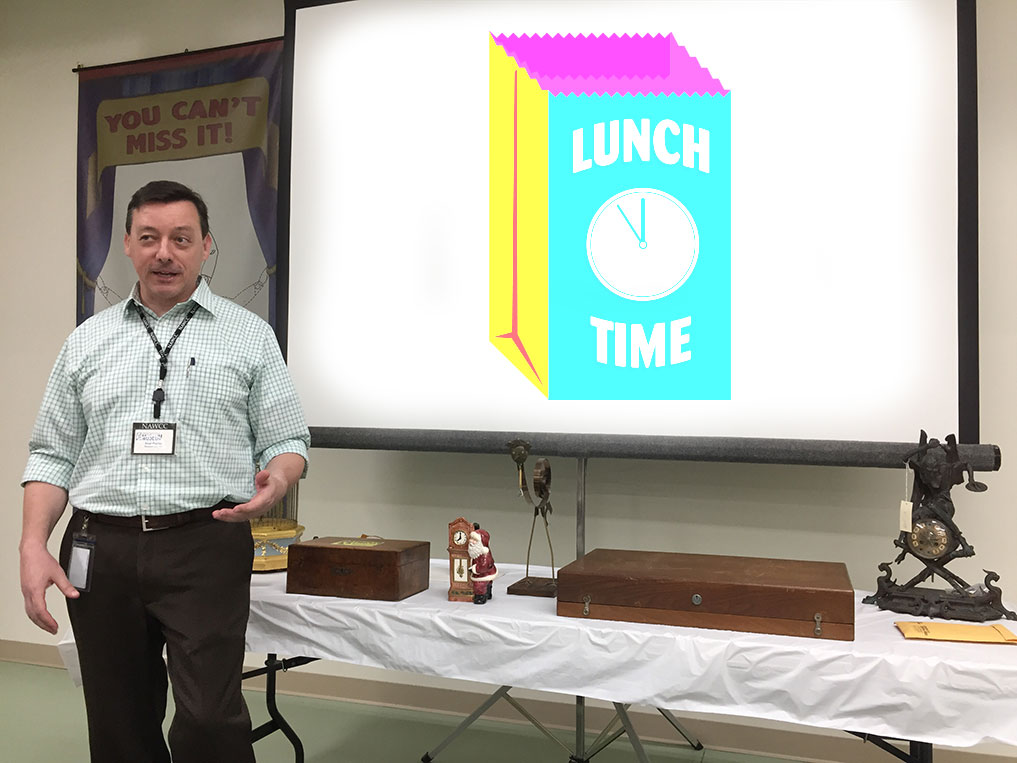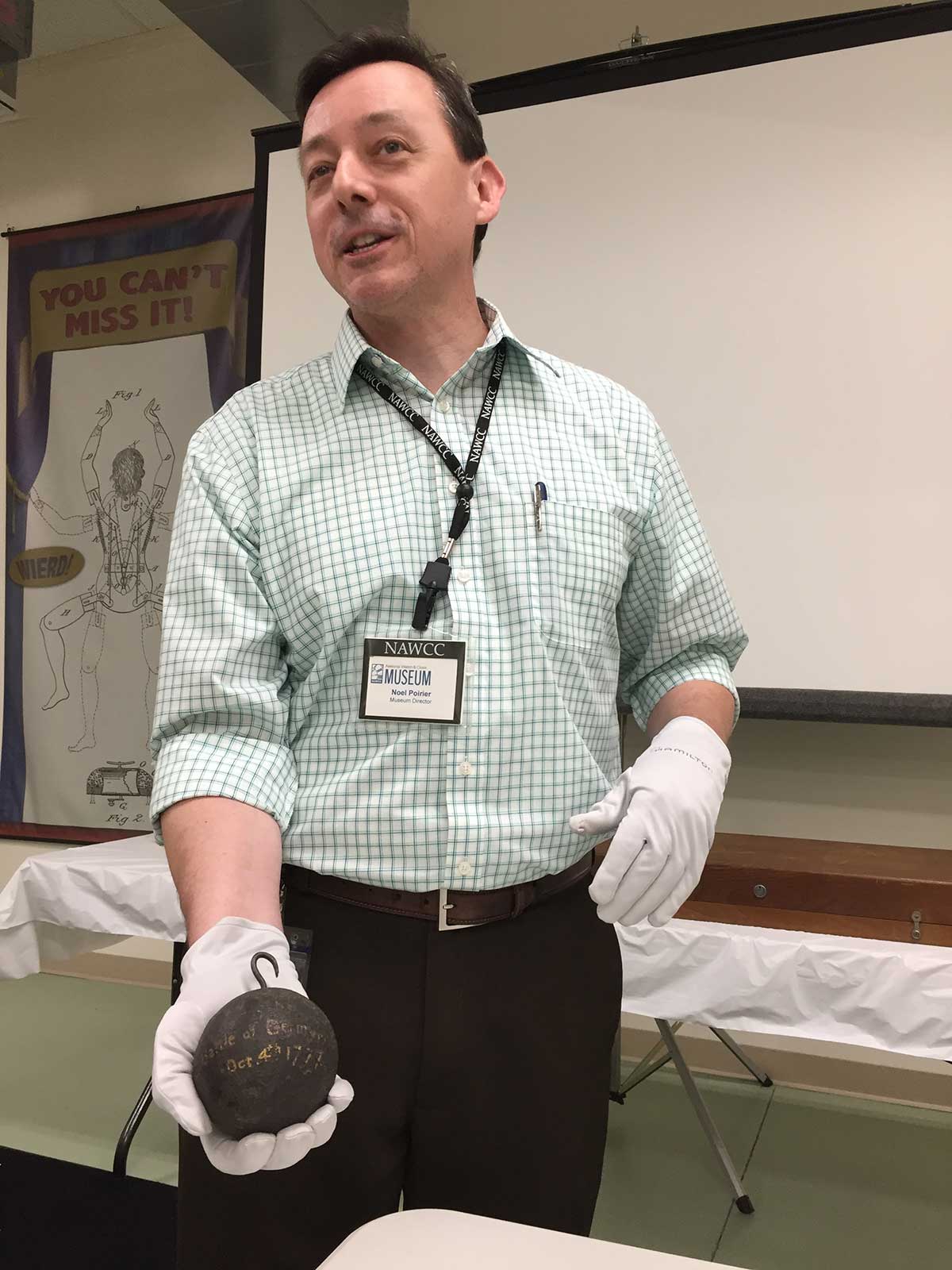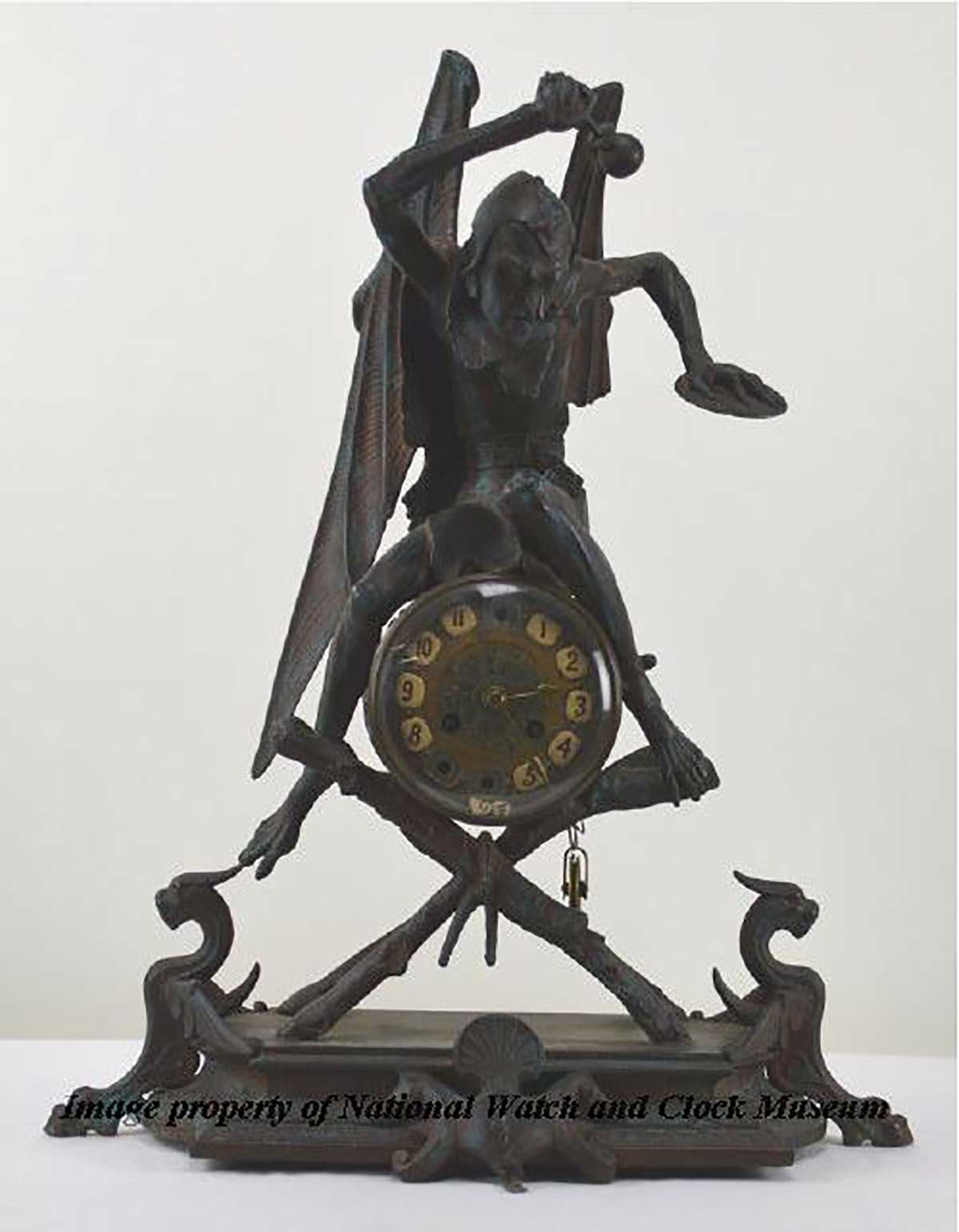
The National Watch and Clock Museum in Columbia, PA, has been open to the public since November 6, 1977, attracting more than 15,000 people per year. When it opened its doors 40 years ago, it had fewer than 1,000 items on display. Today, the Museum holds over 12,000 items, many of which have been donated by members of the NAWCC, watch and clock collectors, and horological enthusiasts. Although most of the items donated over the years are beautiful works of art and of great historical value, some donations are a little more on the peculiar side and are what we at the Museum refer to as “oddities.”
On October 18, 2017, National Watch and Clock Museum Director Noel Poirier hosted a “Lunch Time” presentation titled, “Oddities from the Museum Collection.” Poirier showed some strange, peculiar, and just plain odd objects that have interesting backgrounds. Although some of the items were indeed unique clocks, others weren’t even clocks at all.
Poirier wore special white gloves to avoid causing any damage to the artifacts from the oils on his skin. Laid out on a table next to Poirier were multiple donated artifacts. The first thing that caught my eye was an aged cannonball, but what might that have to do with horology? Written on the cannonball were the words, “Battle of Germantown, Oct. 4th, 1777.” If you looked closely, you could see a hook protruding from the top of the ball. Poirier explained that this cannonball had been converted into a clock weight many years ago and was donated to the Museum because of its historical value in the American Revolution and for its horological component. Although this donation holds historical value, another item on display was donated simply because of its mechanical shape.

A bird made of metal that bobbed its head when it was touched was donated to the Museum. Poirier explained that items of recommendation like this interesting bird are normally taken to a committee, who determine if it should be added to the collection. Items like this, although they are fun to look at, are rejected because they lack significant horological value. Even though some items are rejected, Poirier explained that he still likes to keep some of the more fun items on his desk for entertainment.
A large case on the table was open to display multiple clock components from the Hamilton Watch Company founded in 1892 in Lancaster, PA. The wooden box marked “Gage Block Precision” contained more than 50 clock parts, including centrifugal gear assemblies, large turning machine parts, time fusee shafts, and gold-plated fusee parts and assemblies. All parts were placed within a resin cube to better see and preserve each tiny component. Children in the audience were fascinated with being able to hold each cube and gaze into it. They were also very interested in a mechanical caged bird that even had the ability to sing.
This Singing Birdcage was one of the more beautiful pieces to observe. Poirier turned a key that made the bird chirp in a beautiful tune. Upon close inspection, the bird had real feathers and legs because it was, in fact, a taxidermy bird. The bird sat on a perch enclosed in a domed metal cage. Although this piece is not a clock, it was donated because of its fine mechanical mechanism that enabled the bird to do its chirping, shake its tail, and turn its head. Most of the items on display were not actually clocks, but there was one clock that definitely turned the heads of those in the audience.
The Devil Clock, as it is referred to, is a donation that might give you the heebie-jeebies. Presumably from France in 1880, this clock case has a large winged demonic figure seated on top of a base drum on a stand where the timepiece is contained, holding a mallet in one hand raised overhead and a cymbal strapped to the other. The drum is mounted on a stand formed from branches tied together and winged griffin side mounts. Through research it was found that this piece normally comes with two candelabras on each side, but over time the original owners lost them and are only left with the centerpiece.

Some of the donations are cherished and after careful review, put on display in the Museum, but some with lesser value, though rejected for display, are still examined with curiosity and admired for their uniqueness. Although they may not get a spot on the wall or shelf within the Museum exhibits, some are still proudly displayed on the desk of Poirier and kept behind the scenes in the inventory. The Museum staff continues to receive and encourage unique donations and is always willing to inspect a recommended piece. It’s exciting because they never know what will show up next.